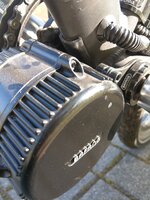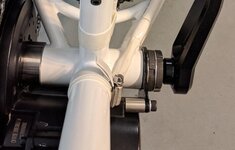Driverwanted
New Member
- Region
- Canada
I'm in the process of building a Ti ebike , picked up a MTB frame from planet x 60% off - even if it falls apart it was worth the try... i'll be taking my BBSHD off my hybrid bike and installing it on this frame.
One of my concerns when i build the first bike was the play between the crankshaft of the motor and the bottom bracket , it's only .2mm (BB Standard Dia 33.7mm) (BBS Shaft dia 33.5mm) but im a heavy guy 250lbs 6'6"... i had quite a bit of BB creak and sounds coming from my road bike - could be the chain suck of my luna front ring but it sounds more like metal on metal around the BB (it goes away on really wet rides)
so getting to the point of the thread and the question - has anyone shimmed their BB with any material to cut down on noise ? Silicon tape, Metal, loaded it with grease ? thoughts ? or ideas on if this is crazy or which material might be best ? ty !!
mike
One of my concerns when i build the first bike was the play between the crankshaft of the motor and the bottom bracket , it's only .2mm (BB Standard Dia 33.7mm) (BBS Shaft dia 33.5mm) but im a heavy guy 250lbs 6'6"... i had quite a bit of BB creak and sounds coming from my road bike - could be the chain suck of my luna front ring but it sounds more like metal on metal around the BB (it goes away on really wet rides)
so getting to the point of the thread and the question - has anyone shimmed their BB with any material to cut down on noise ? Silicon tape, Metal, loaded it with grease ? thoughts ? or ideas on if this is crazy or which material might be best ? ty !!
mike

